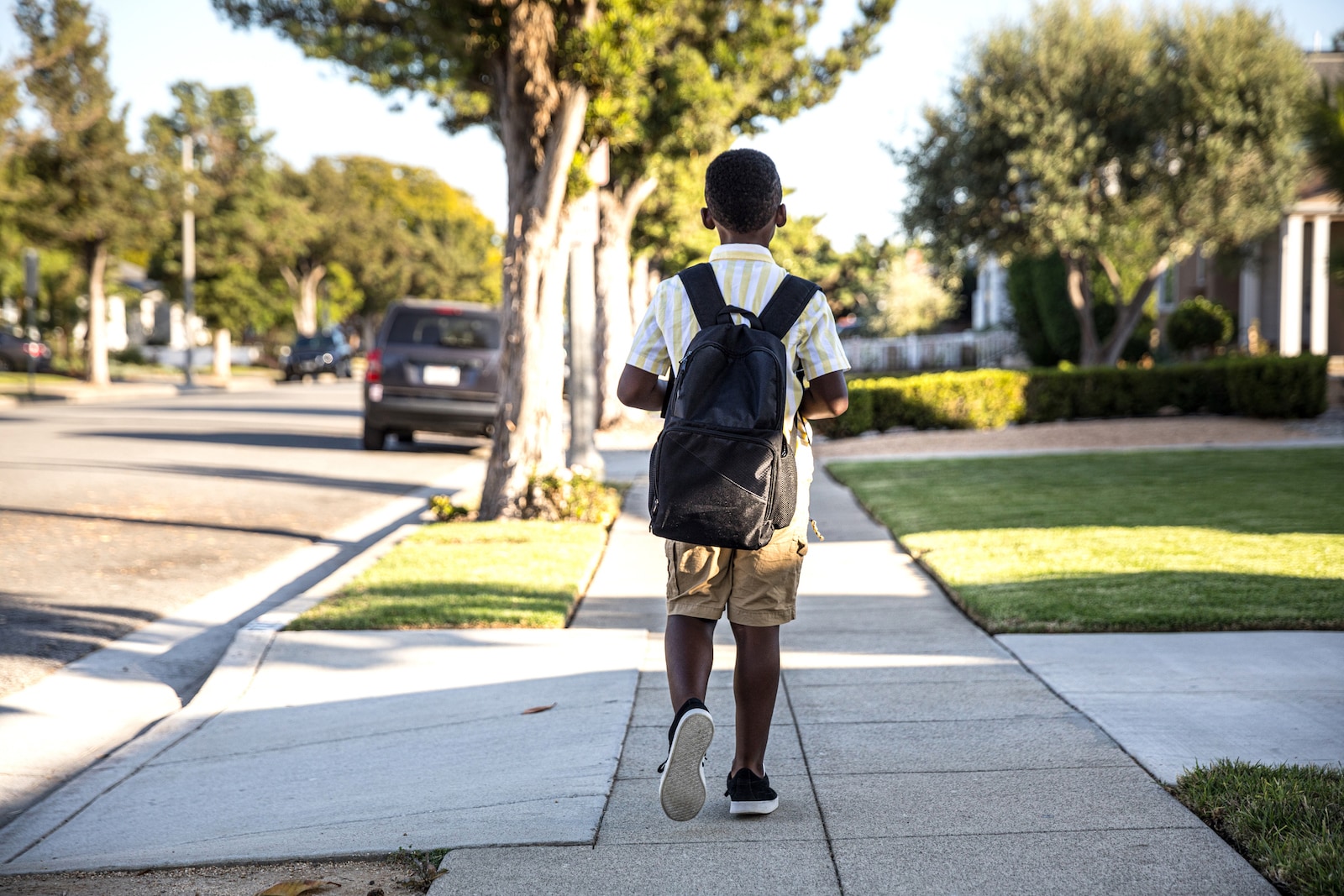When it comes to parenting styles, animals are natural metaphors, as their names generally conjure an image of a one-dimensional behavior. Tiger mom, for instance, was a neologism coined in 2011 to describe tough disciplinarians. More recent, and on the other end of the spectrum, is jellyfish parenting, a parenting style name dubbed by Dr. Shimi Kang, a Harvard-trained psychiatrist and author of a number of books, including “The Dolphin Parent.”
“Jellyfish parenting is a style that’s more permissive in contrast to other parenting styles,” Kang says, referring to shark- and dolphin-style parents, which are two additional parenting styles she breaks down in her book (more on this shortly).
Here, Kang and other experts explain what it means to be a jellyfish parent, how this style affects kids and more.
What is jellyfish parenting?
Jellyfish parents, according to Kang, generally don’t set clear rules or expectations with their kids. They’re more lax — or, in jellyfish terms, “go with the flow” — particularly when compared to other parenting styles.
“The science states there are three general parenting styles,” Kang explains. “Authoritarian [which she coined “shark”], permissive [jellyfish] and authoritative [dolphin]. Using the animals as a metaphor was more descriptive in understanding the nuances of the styles.”
What are some examples of jellyfish parenting?
While a “go with the flow” style typically invokes images of happy, laid-back folks, the reality is, when it’s a practice employed around the clock when parenting kids, it’s not exactly a good thing.
As an example of jellyfish parenting in action, Kang uses technology limits (or lack thereof). While authoritarian parents may have “over-the-top rules about [screen time] with no compromise or adaptation,” she says, jellyfish parents might have “no set boundaries or technology guidelines” for their kids. This, she notes, may cause kids to “use technology inappropriately.”
Andrea Marano, a licensed clinical social worker who specializes in family wellness, gives another example.
“Think of bedtime,” Marano says. “With jellyfish parenting, there would be minimal to no consistent routine or expectations in terms of timing, winding down activities, etc. Sleep would be more of a child-led approach of falling asleep when tired.” Consistent bedtime routines, it should be noted, have been shown to improve kids’ sleep.
On the flip side, though, being flexible and untethered to a game plan is sometimes good with kids. Alexandria Lanza, a licensed professional counselor, gives a few examples of when being a more “permissive” parent can be beneficial:
- Allowing a child to choose their extracurricular activities, rather than imposing a strict schedule on them.
- Being open to spontaneous family outings or vacations based on the children’s interests.
- Listening to children’s concerns and preferences when making decisions about family activities or rules.
How is jellyfish parenting similar to other parenting styles?
According to Lanza, two parenting styles similar to jellyfish parenting are free-range parenting, which focuses on limited supervision in order to encourage independence, and attachment parenting, which focuses on fostering closeness and connection early on in life.
“Both free-range and jellyfish parenting styles emphasize giving children more autonomy and independence,” Lanza explains. “Additionally, there is some overlap with attachment parenting in terms of building strong emotional bonds. However, attachment parenting is generally more structured and responsive.”
That being said, Kang notes, it’s rare that a parent is all one style, all the time. “There can be an aspect of jellyfish parenting in all parenting styles,” she says. “For example, some parents I have worked with can be very ‘shark’ for things like piano and homework and very jellyfish for things like junk food and video games.”
“Some parents I have worked with can be very ‘shark’ for things like piano and homework and very jellyfish for things like junk food and video games.”
— Dr. Shimi Kang, psychiatrist and author
What are the benefits of jellyfish parenting?
Jellyfish parenting has its benefits, especially when it isn’t used across the board. Here, Kang, Marano and Lanza note the potential advantages of this style of parenting.
Boosts early confidence. While research has shown that too much freedom without guidelines can be “dangerous” to children, initially, children of jellyfish parents “appear confident,” Kang says, adding that “they are more likely to take risks and be outspoken.”
Reduces stress. Less rules means less planning, and, let’s face it, less mental noise. “The laid-back approach of jellyfish parenting can reduce parental stress,” Lanza notes. ”These parents don’t feel pressured to micromanage every aspect of their children’s lives.”
And at the same time, Lanza adds, kids can “feel more relaxed without excessive pressure or rigid schedules.”
Strengthens parent-child bond. When parents give their children a say and make them feel like an integral part of the family (as opposed to a child who should blindly follow the rules), it helps strengthen the parent-child bond, notes Lanza.
She says: “By listening to their children’s preferences and needs, parents may forge stronger emotional connections with their kids.”
Promotes creativity and independence. Allowing children to explore their interests — as opposed to ones you choose for them — helps foster both creativity and independence, notes Lanza. Put another way: If you’re thinking tennis team and your child is thinking art class, going with the latter may yield bigger personal and practical results.
Helps create space. There’s no question: The pressure on parents to do, do, do today is untenable (for both parents and kids). “Having a jellyfish mindset — at least some of the time — allows for space to do what matters most,” Marano says. “It lets parents be present, nurturing and attuned to their child.”
What are the drawbacks of jellyfish parenting?
Being a jellyfish parent all the time can also yield unhealthy results. Here, Kang, Marano and Lanza share potential drawbacks of this style of parenting.
Increased risk-taking behaviors. When kids lack rules, boundaries, limitations and expectations, they may also lack an ability to work with authority, notes Kang. This, she adds, is also associated with “higher rates of unhealthy risk-taking behavior, like drug and alcohol abuse, problems with authority, such as teachers and police, and less self-motivation.”
It’s also worth noting that when parents are completely lax with screen time, that, in and of itself can cause its own set of problems. For instance, research has consistently found a connection between social media and anxiety and depression in kids, as well as aggression and exposure to on-screen violence.
Feelings of instability without boundaries. They may act like they hate rules, but kids flourish with routines and structure, full-stop. Not only do boundaries gently show kids what is expected of them throughout the day, they also show which behaviors are OK, and which are not.
“Children thrive off of structure, understanding boundaries and having some limits,” Marano says. “So [when jellyfish parenting], it is important to also make sure you are establishing and enforcing boundaries.”
“Lack of structure,” Lanza adds, can also “lead to uncertainty and insecurity.”
“Children thrive off of structure, understanding boundaries and having some limits.”
— Andrea Marano, licensed clinical social worker
Missed opportunities. Sometimes parents know best, despite what kids may argue. When parents are overly flexible, Lanza notes, it may lead to “missed opportunities for skill development or academic success.” In other words, just because your kiddo doesn’t want to study for their test or try a new club, doesn’t mean they shouldn’t.
Heightened vulnerability for neurodivergent kids. Neurodivergent kids, such as those with attention deficit hyperactivity disorder (ADHD), aren’t well-suited for ‘round-the-clock relaxed parenting, note both Lanza and Marano.
“Children who are neurodivergent in any capacity may benefit from clearer expectations, guidelines, boundaries and routines,” Marano notes. “Therefore, they may become dysregulated by a more ‘go with the flow’ mentality.”
The bottom line
Employing a jellyfish parenting style some of the time is perfectly OK — in fact, it can be beneficial when used to promote flexibility and independence. In fact, both parents and kids reap the biggest rewards when parents are adaptable and aren’t married to one particular parenting style.
“I don’t think the parent-child relationship is typically marked by any one particular style, as we all fluctuate between the three,” Kang says. “The overall goal is to be balanced, collaborative, community-minded and adaptable.”






